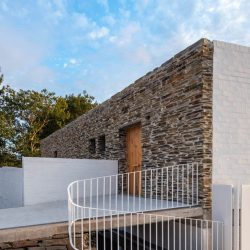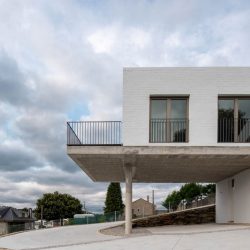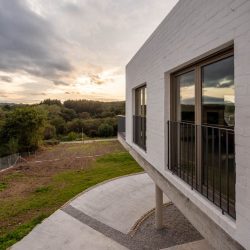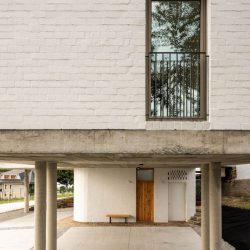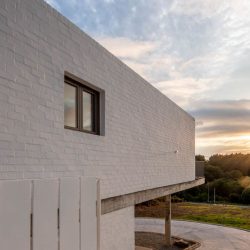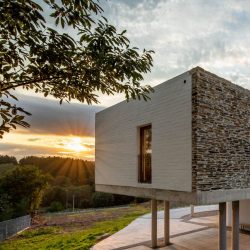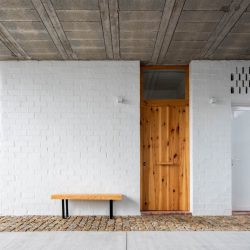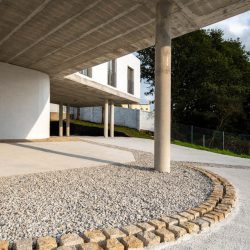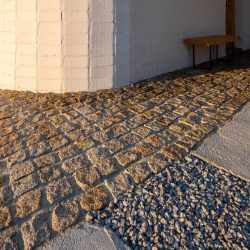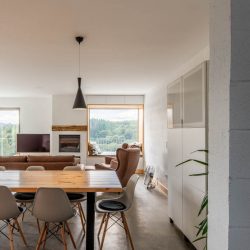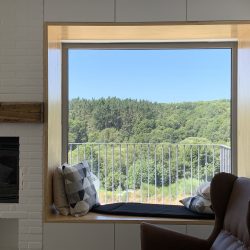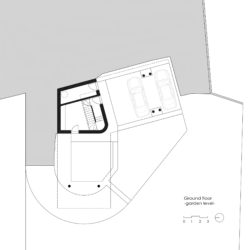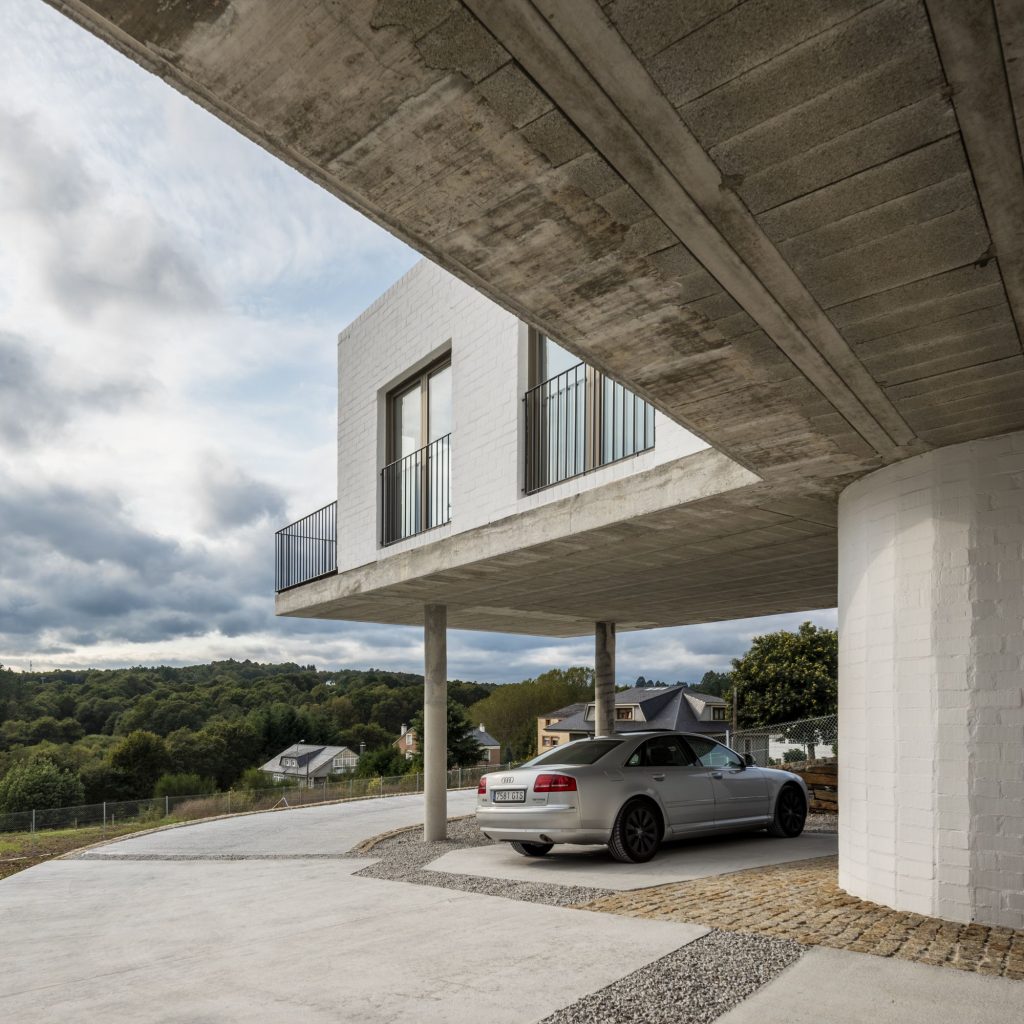
Ameneiros Rey . Javier Sanjurjo . fotos: © Héctor Santos-Díez . + wallpaper
When Berlin-based architect, Javier Sanjurjo was searching for land in his Spanish hometown to build a house for his family, he quickly realized that the plot with the biggest potential was overlooked by the others. The site steps down steeply away from the access road, making a conventional building unattractive.
Further, the spectacular views hidden behind an old wall between the plot and the public road appeared to be unnoticed. The street is located 3 meters over the highest point of the land, and 10 meters over the lowest point; a perfect viewpoint over the forest and river. Together with the local studio Ameneiros Rey, the challenge was to create a design with great accessibility as well as functionality, where the family could experience a direct connection with the surrounding nature.
The house is inspired by the design of a Hórreo – a granary, typical for the area, built on pillars that lift it above the ground to protect the crop from animals. This also served a practical requirement: One of the most important issues for the family was wheelchair accessibility, requiring the living and sleeping area to be on the same level of the street, without a single step. The lower floor with storage function and the garden is easily accessible by a ramp that surrounds the house.
At the street level, the house is “L”-shaped with two different wings (day and night area), opening up to the southwest. The living room, dining room, and 3 bedrooms are oriented to the scenery. The terrace serves as a viewpoint towards the forest, the river, and the stars, emphasizing the connection between architecture and nature. The design of the house generates innovative outdoor rooms on the garden level; a place to stay protected from rain in the winter and provide shade in the summer.
The house is an exercise in sufficiency. Functional, economic, and eco-friendly architectural values meet together, with the use of carefully selected local materials. The materials are used in a way that relates to the character of each side of the house. Robust and durable natural stones conform to the eastern facade on the noisy street side, closing the house to the road. White painted brick was the choice for the facades that overlook the forest to the southwest, with large windows designed around a series of curated views.
For the lower floor, where the family park the cars, colder raw concrete combined with cobblestones from the region was chosen. The interior also stands out for its simplicity in the use of materials: polished concrete floors, white walls without coatings showing the construction materials, and fine detailing made of local wood. A 100-years-old wooden beam crowns the chimney next to a window bank which frames the landscape to the sunset and serves as a reading corner. The house is the family meeting point, where the architect´s parents enjoy their daily life.
_
Ameneiros Rey
Proyectos
Estudio
Contacto
Vivienda SJ, Vilalba
Vivienda SJ, Vilalba
Fecha de construcción: 2021
Uso: Vivienda unifamiliar
Emplazamiento: Vilalba, Lugo
Superficie: 202 m2
Cliente: Privado
Arquitectos: Ismael Ameneiros, Santiago Rey, Javier Sanjurjo, David Robles y Tamara Vila
Empresas colaboradoras: Garvi Lugo Construcciones, Proyectos y Reformas, S.L.
Fotografía: Héctor Santos-Díez
La contención económica, una parcela con una topografía desvinculada del vial de acceso con vistas al paisaje y el requerimiento de hacer una vivienda lo más accesible posible desde la calle son el punto de partida de esta vivienda. Estos condicionantes establecieron la implantación en la parcela asumiendo su mínima interacción con el terreno. Por ello, se sitúa la vivienda al nivel de calle, generando un volumen elevado sobre el terreno, orientado a las vistas y unido con una pasarela peatonal a la acera. Un hórreo habitable. La vivienda se distribuye, a cota de calle, en esa planta superior en forma de “L” con dos alas bien diferenciadas (zona de día y noche). En la planta inferior se disponen los locales técnicos y de almacenaje en un bloque central, a ambos lados de ese bloque se liberan dos grandes espacios abiertos y cubiertos por el propio edificio que sirven de espacio-cobijo para el coche o espacio estancial. El factor definitorio de la limitación presupuestaría, así como facilitar un bajo coste de mantenimiento, nos lleva a la racionalidad constructiva, material y espacial. Empleo de materiales crudos sin apenas revestimientos, pero conjugados con el entorno, de gran duración, pero sobre todo de fácil construcción adaptada a los medios que se disponen en este marco económico.


